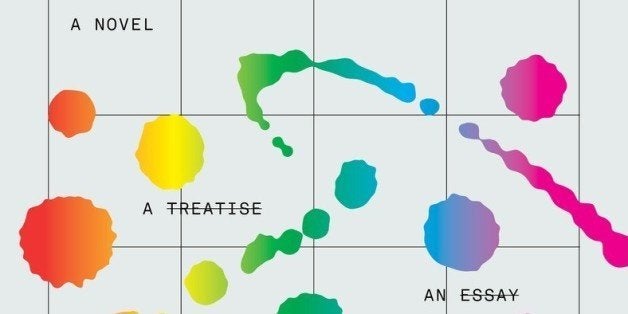
Satin Island
by Tom McCarthy
Knopf, $24.00
Published Feb. 17, 2015
The Bottom Line is a weekly review combining plot description and analysis with fun tidbits about the book.
What we think:
Last year Tom McCarthy wrote thoughtfully and passionately against the merits of Realism -- that is, the mode of writing that prefers to describe events straightforwardly, under the pretense that such a style conveys truth more accurately than, say, stories about magicians or time travel. He dismisses the latest crop of Realists lauded by critics, namely Karl Ove Knausgaard, whose My Struggle is said to weave the epic and the quotidian together in the space of a single paragraph. Instead, McCarthy praises writers such as William S. Burroughs, whose photography keenly shows the approach he takes in his writing. Burroughs cuts up photos of city streets and reassembles them, forming fragmented images and explaining, “Consciousness is a cut-up; life is a cut-up.”
McCarthy’s reverence for Burroughs is apparent in his latest novel, a slim and abstract book called Satin Island. The story begins in Turin, with its protagonist U. describing the famous shroud discovered there in the 19th century. He dismisses the myth behind the object -- that it encased Jesus Christ when he was buried after crucifixion -- writing, “We see things shroudedly, as through a veil, an over-pixelated screen. When the shapeless plasma ... begins to coalesce into a figure that’s discernible ... we can say: This is it, stirring, looming, even if it isn’t really, if it’s all just ink-blots."
To both McCarthy and U., the mythical shroud isn’t the only object that, while charged with meaning by many, can be dismissed as “just ink blots.” The entire novel seems to serve as a metaphor for the writer’s charges against Realism -- a defense of his craft as an artist who prefers abstractions.
U. embodies McCarthy’s argument against organizing knowledge and perceptions formally. A “corporate anthropologist" for a company referred primarily as "the Company," the narrator structures his ramblings about work, travel and trivial relationships like an academic essay, meticulously numbering paragraphs that otherwise flow like an interior monologue, with tenuous connections between topics. He jumps quickly from Turin to airports to bicycle hubs, relating only surface-level information, much in the way we pleasurably follow Wikipedia chains without retaining a lot of deep knowledge.
U. writes earnestly about his strange day job, which involves observing everyday human interactions with products such as blue jeans and coffee lids and Japanese video game avatars, and passing his findings on to clients via dossiers to be used for marketing purposes.
Because U. blends his background as a cultural theorist so effortlessly into branding initiatives, his boss grants him the opportunity to work on a promising long-term project: to compile the "Great Report," a comprehensive study of... well, everything. U.'s thrilled as the prospect: his hero, after all, is anthropologist Lévi-Strauss, who traveled widely, recognizing patterns across societies. But his tendency to draw neat conclusions from human practices is revealed to be an obsession that darkens his mood when events on the news or in his personal life don’t add up logically.
McCarthy is at his satirical best when U. attempts to chalk up random tragedies, such as a widely reported parachuting accident, to complex murder plots or suicide pacts. But when the same sharp humor is applied to U.’s personal relationships -- his friend who’s diagnosed with thyroid cancer, a strain with a high survival rate, slowly loses hope in conventional treatment options before his health nosedives suddenly -- the story comes off as almost absurdly nihilistic.
While Satin Island functions as a funny and often thoughtful commentary on the falsity that underlies many quests for meaning -- be it through religion or, say, novel-writing -- its argument approaches its own kind of dishonesty. By ignoring the value of the meaning we create for ourselves, in our hobbies, our personal relationships, and our artistic pursuits, McCarthy’s book sometimes suffers from chilly cynicism.
The Bottom Line:
McCarthy's latest novel hilariously, if sometimes too cynically, mocks the way we tell stories today.
What other reviewers think:
The Atlantic: "Satin Island is the act of an artistic provocateur with an existential bone to pick. It cries out in protest (albeit with a healthy sense of mischief) against the calcification of narrative art -- a form that’s been coopted by corporate interests, which reshape culture to their own mercenary ends."
Los Angeles Times: "McCarthy's style is at times reminiscent of David Foster Wallace's stories of characters caught in the gears of consumer capitalism coupled with the whimsy of Jean Philippe Toussaint's literary situational comedies in which every detail is microanalyzed."
Who wrote it?
Tom McCarthy is the author of three earlier works. His 2010 novel C. was short-listed for the Man Booker Prize.
Who will read it?
Anyone interested in abstract art or writers who wear their philosophies on their sleeve.
Opening lines:
"Turin is where the famous shroud is from, the one showing Christ's body supine after crucifixion: hands folded over genitals, eyes closed, head crowned with thorns. The image isn't really visible on the bare linen."
Notable passage:
"The article kept mentioning 'faith.' Skydivers are induced into and graduate up through a world in which faith plays a fundamental role. They must believe in their instructors; in the equipment; in the staff packing their rigs; in tiny ring-pulls..."
